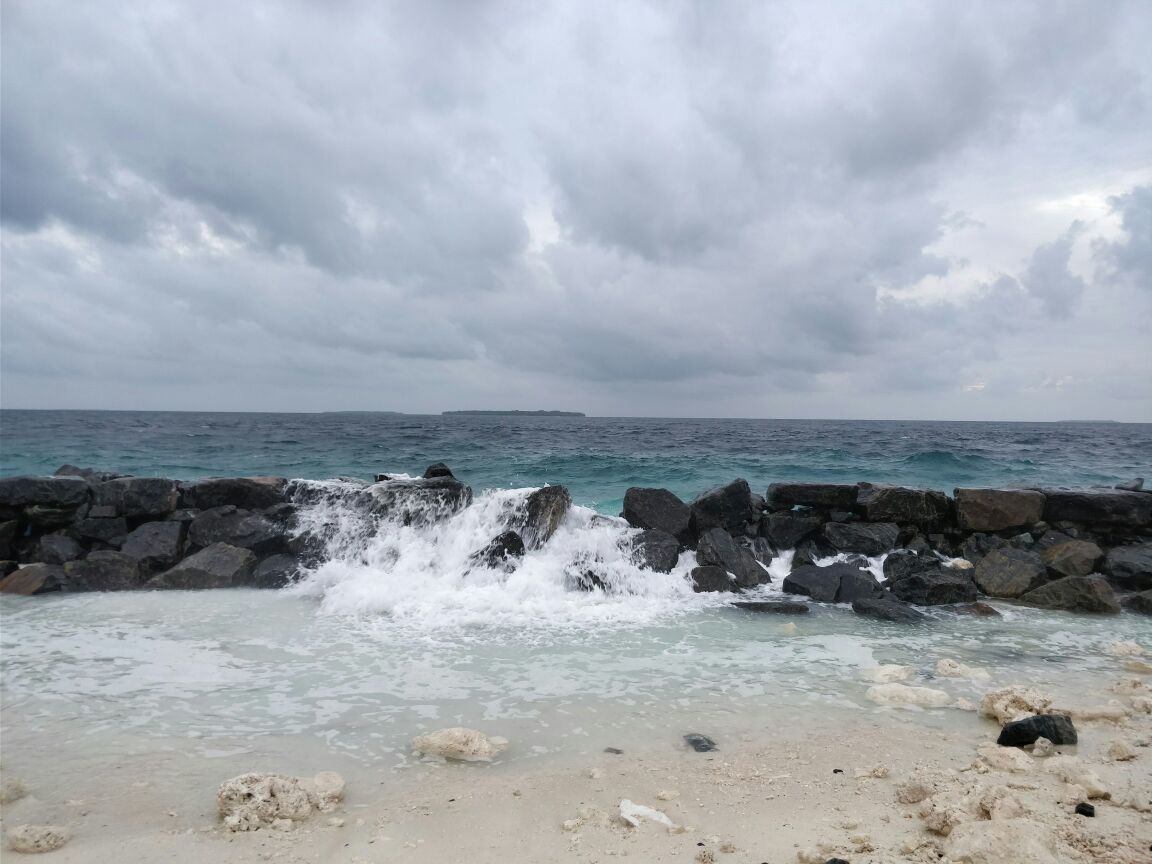Flooding as strong waves damage Kulhudhuffushi breakwater
A swathe of the Kulhudhuffushi mangroves was reclaimed for the airport project last year. The lagoon was reclaimed all the way to the reef’s edge on the west side and the artificial breakwater was set up for shoreline protection.

27 May 2018, 9:00 AM
Strong waves and seasonal swells in Kulhudhuffushi have damaged a newly placed breakwater on the west side of the island, with flooding in an area reclaimed for a controversial airport development project.
Some boulders placed outside the reclaimed area for shoreline protection have also been displaced, island residents told the Maldives Independent.
“It’s not completely destroyed but some boulders are displaced and waves have poured in,” said Abdulla Adam.
A swathe of the Kulhudhuffushi mangroves was reclaimed for the airport project last year. The lagoon was reclaimed all the way to the reef’s edge on the west side and the artificial breakwater was set up for shoreline protection.
Become a member
Get full access to our archive and personalise your experience.
Already a member?
Discussion
No comments yet. Be the first to share your thoughts!
No comments yet. Be the first to join the conversation!
Join the Conversation
Sign in to share your thoughts under an alias and take part in the discussion. Independent journalism thrives on open, respectful debate — your voice matters.




